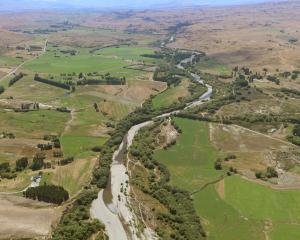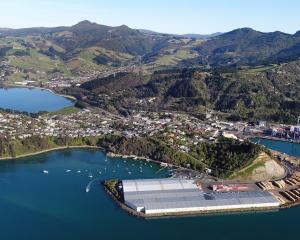After three days of heavy rain, which has caused widespread flooding and disruption throughout North Otago, Dunedin and the Taieri Plain, Civil Defence is now bracing for a cold snap and snow.
The MetService predicted a very cold strong southerly flow sweeping over the South Island last night, bringing snow to near 300m in Otago and Canterbury.
That was expected to be followed by a second cold front from the east tonight with possible heavy snowfalls in North Otago and Canterbury.
Waitaki civil defence personnel were busy yesterday assessing damage and surface flooding, assisted by the New Zealand Army, which provided soldiers and two Unimogs to access isolated areas.
Two Iroquois helicopters were also on stand-by.
In the Waitaki district, about 120 local road closures, apart from state highways, were listed by about 5.30pm yesterday on the council's website.
Civil defence was also responding to reports of people and properties cut off or surrounded by floodwaters.
Supplies of bread and milk were running low in Oamaru, as delivery trucks had not been able to get through.
Relief was expect to arrive last night.
No school bus services ran yesterday and rural schools were closed, along with St Kevin's College and Waitaki Boys', Waitaki Girls' and East Otago High Schools.
Further south, the rain eased on the Taieri Plain last night and the rivers dropped quickly, with any flooding today not expected to be as bad as that experienced yesterday.
The Taieri River was flowing at 749cumecs at Outram at 9pm yesterday, down from its peak of 953 cumecs, and was still spilling into ponding areas.
The Silver Stream was steady at about 49cumecs at 9pm - well below the level at which it begins to spill over into the Gordon Rd spillway.
A "pulse" expected to pass down the Taieri River through the Taieri Plain this morning would raise water levels again, but flooding was not expected to be any worse than yesterday.
One lower Taieri farmer, James Adam, of Otokia, told the Otago Daily Times 350 of his dairy cows almost got caught by the flood in the Taieri, which came up quite rapidly.
His sharemilker, Hamish Jenkins, had to swim the cows to higher ground at 6.30am yesterday.
The cows had come through their ordeal well, but he was thankful they were not being milked at this time of year.
Otago Regional Council duty flood manager Matt Hickey said the Taieri River had been flowing at 350cumecs at midnight on Tuesday and "we thought that was about all we were going to get".
But, six hours later, it had risen to 700cumecs.
This followed falls of rain such as 123mm recorded at Dunedin International Airport over the 52 hours to 4pm yesterday and 250mm recorded at Sullivans dam on Dunedin's Northern Motorway over the same period.
Farmers downstream of Outram got their first Taieri River flood alert at 4.30pm on Tuesday, their second at 10pm and the third alarm at 7am yesterday.
Mr Hickey said although the calls were made, people did not always answer their phone and some did not listen to messages.
The council's environmental engineering and natural hazards director, Gavin Palmer, said the lower Taieri flood protection scheme had performed as it was designed to do.
"So far, we are pleased with how the scheme has operated."
The conditions were a reminder to all, of the "exposure to flood hazard" that exists in the Taieri, Silver Stream and hill catchments, he said.
Waimate District Council chief executive Tony Alden said the situation in the district was not as bad as neighbouring Waitaki, but there were many closed roads.
Areas of concern were Morven, Glenavy and Ikawai with many roads closed because of extensive flooding.
St John had a 4WD vehicle and a tractor if required in an emergency, Mr Alden said.
There were concerns on Tuesday night about McCulloch's bridge over the Waihao River, inland from the twin bridges on SH1 south of Waimate, because the rate of water was "increasing dramatically".
The main trunk railway line south of Dunedin was closed early yesterday when water in the ponding area submerged 6km of track at Henley.
Ontrack spokesman Kevin Ramshaw said it usually took two or three days for that water to subside.
Urgent freight was being transported by truck in the meantime.












